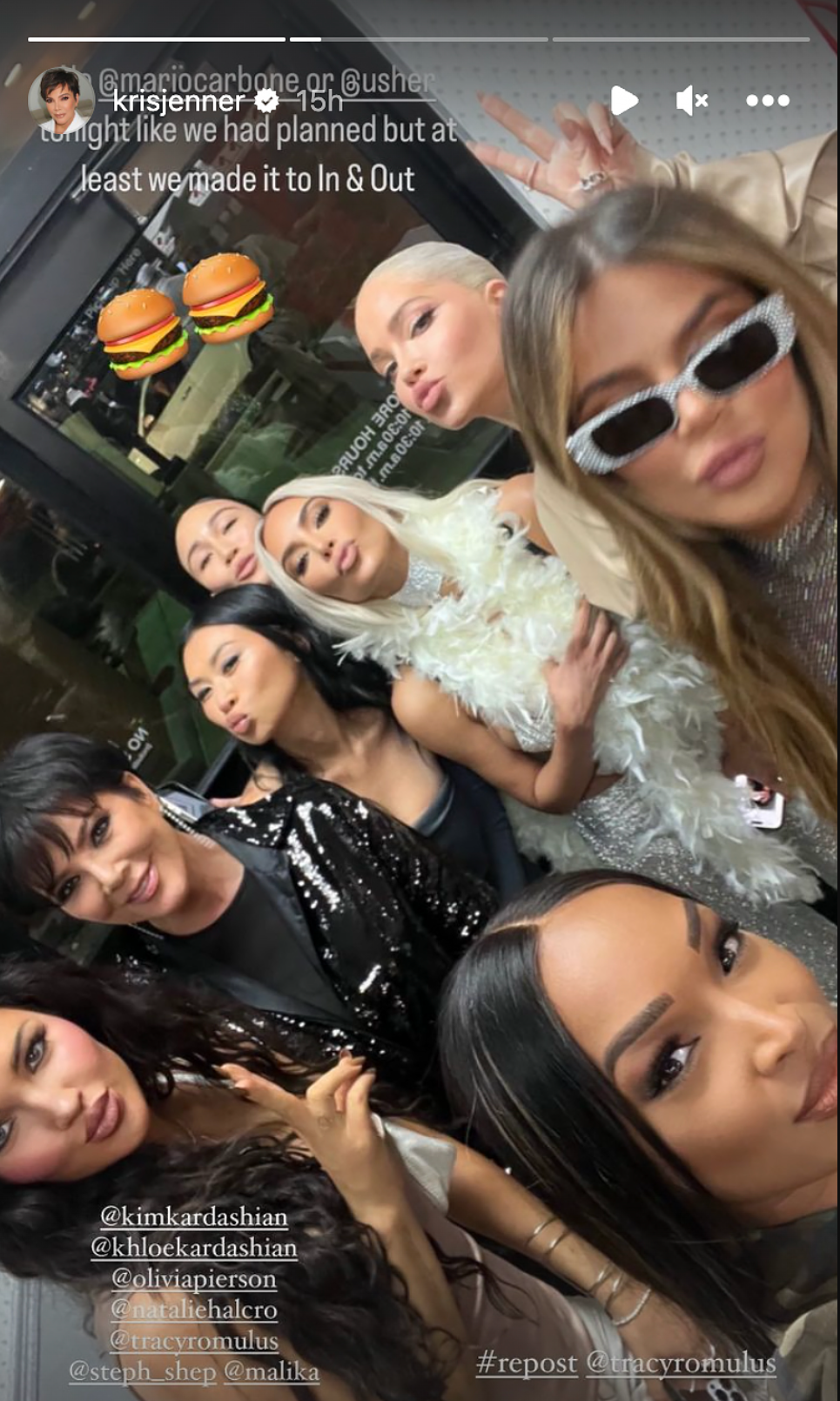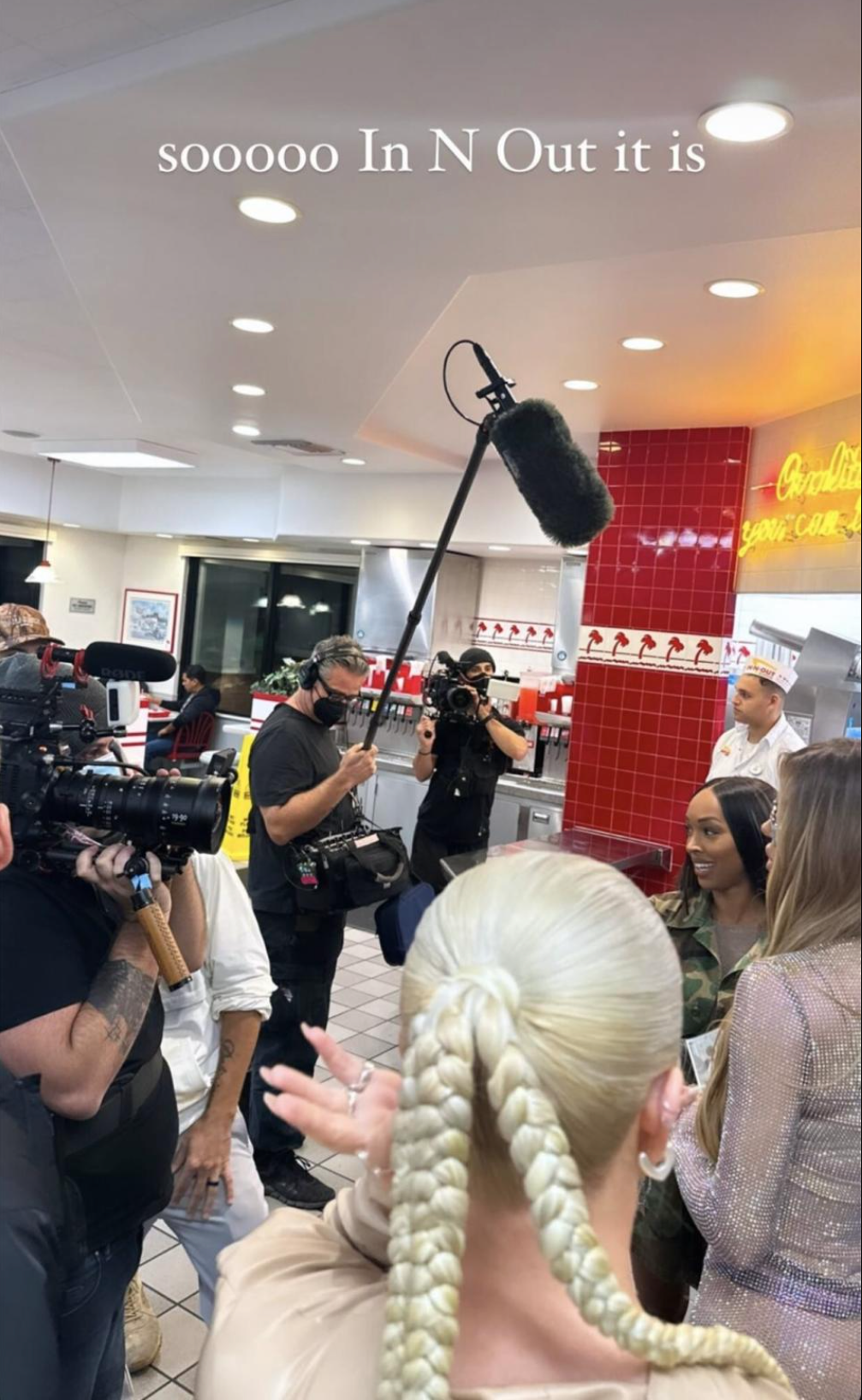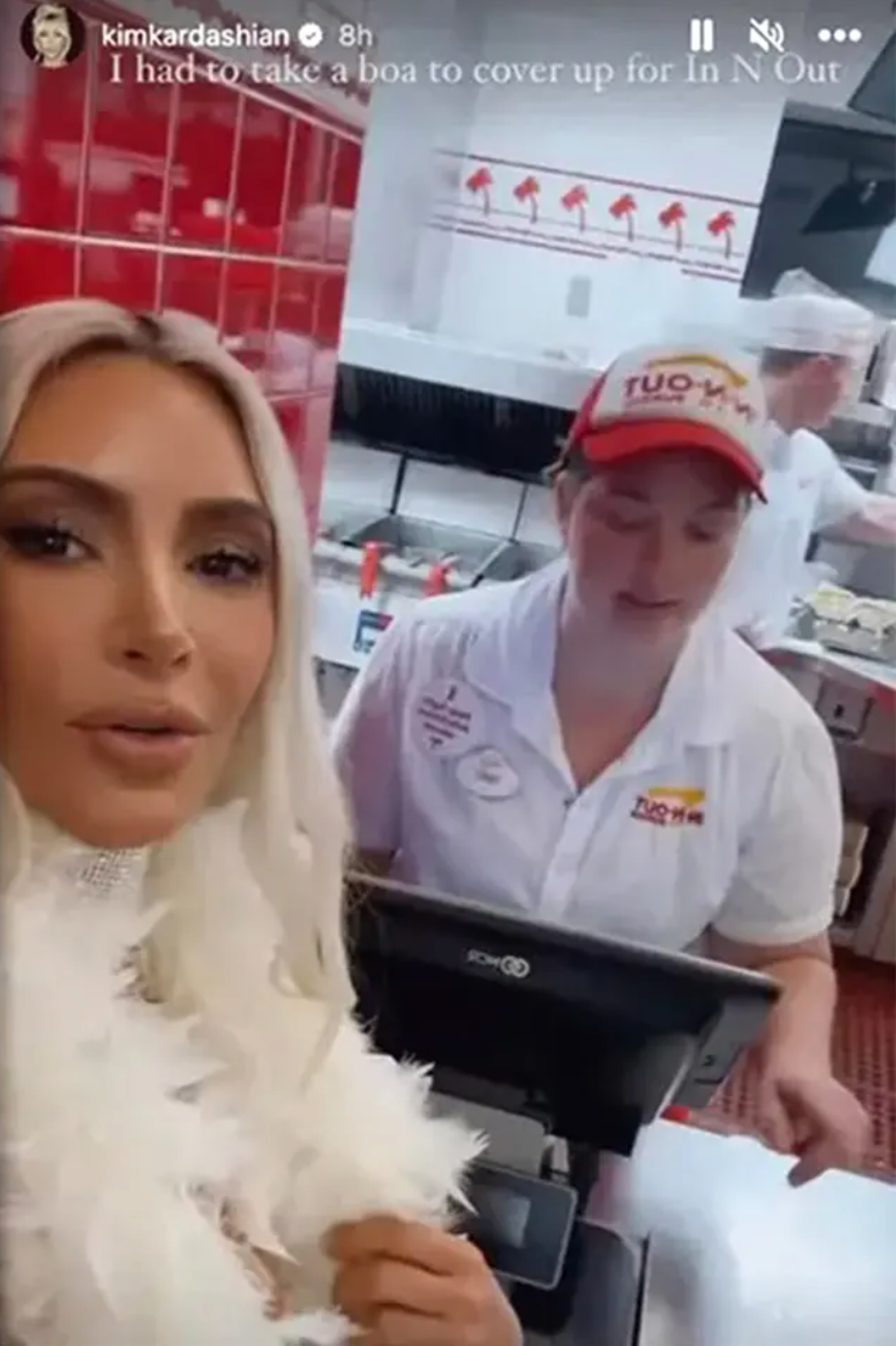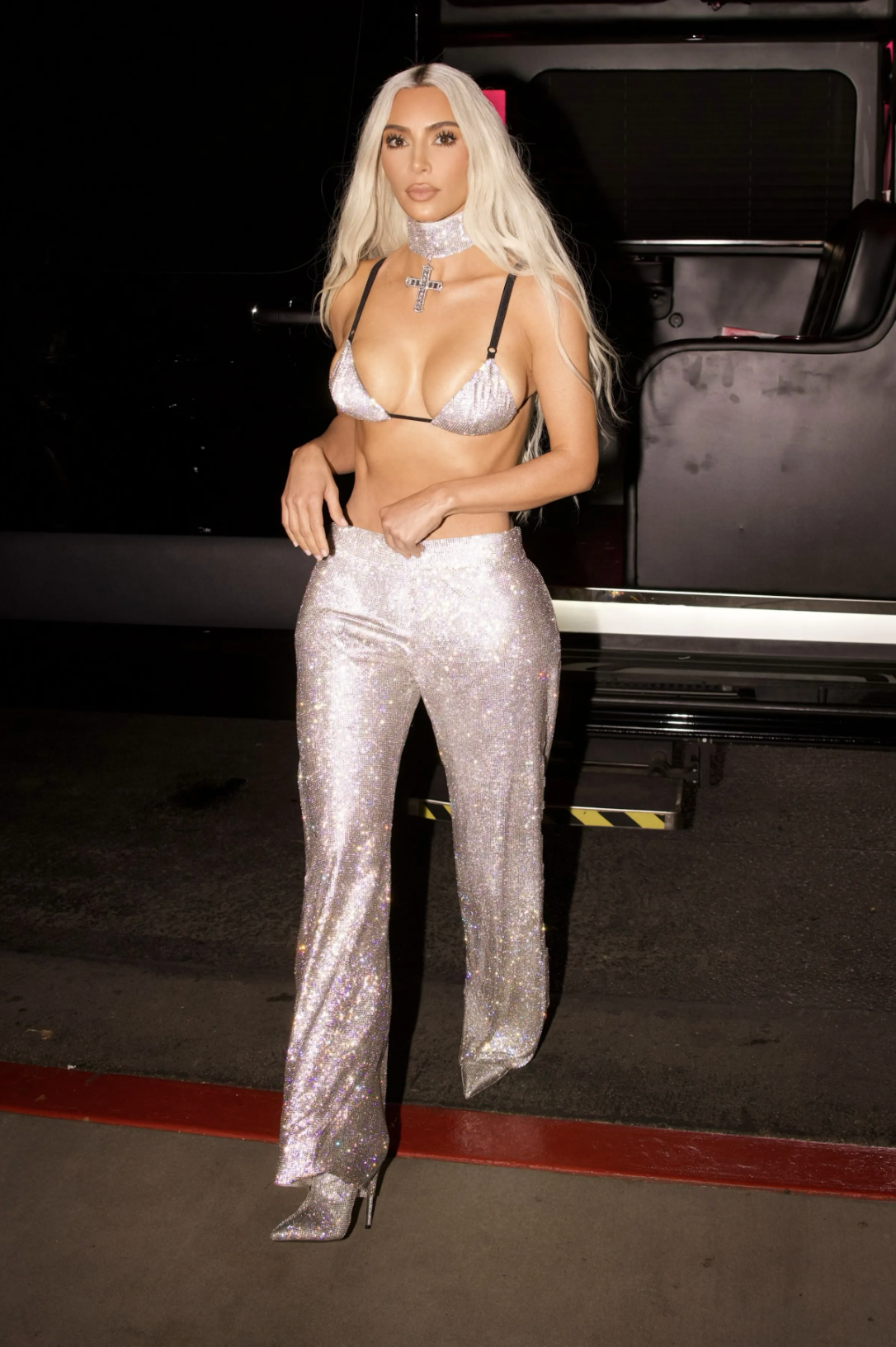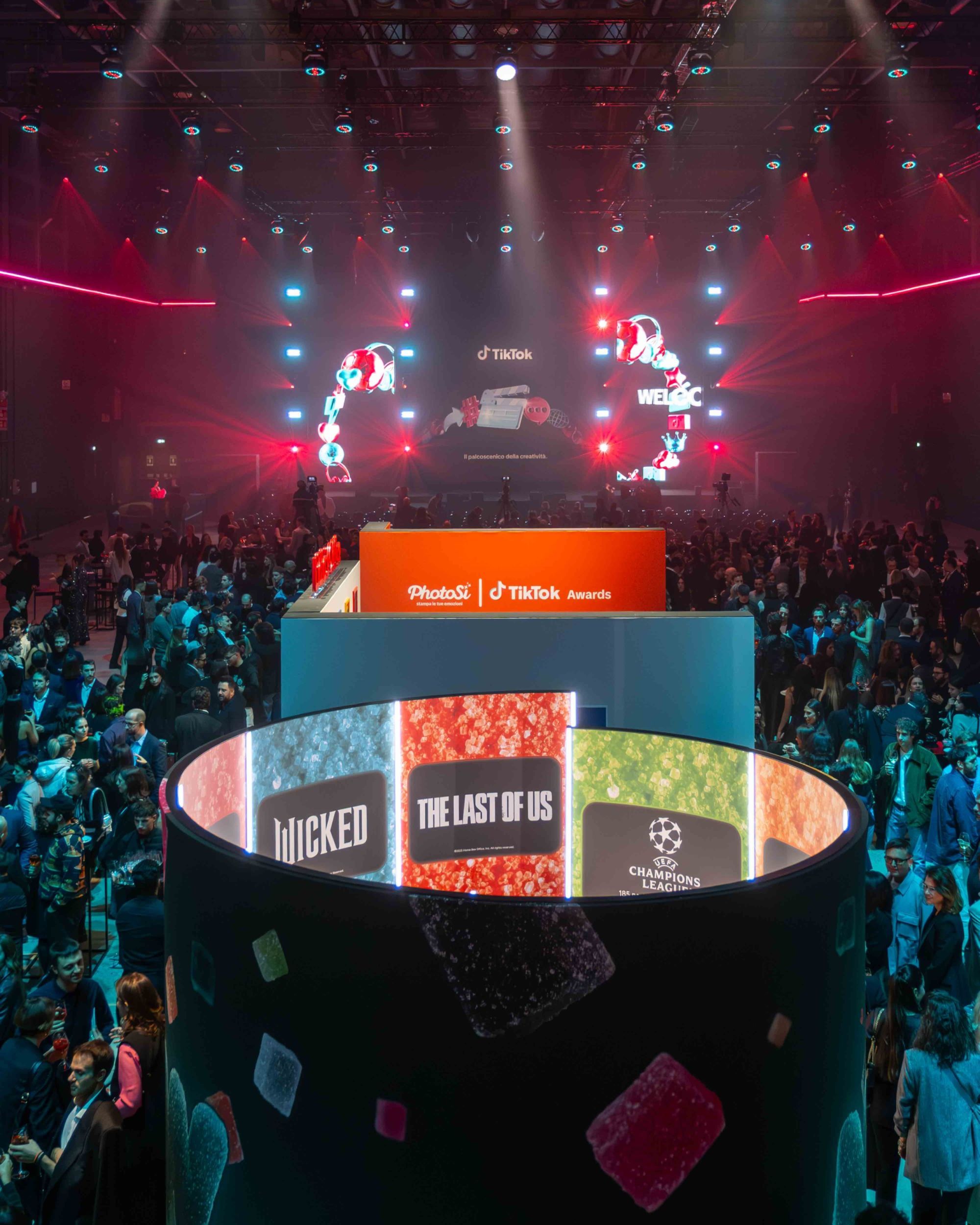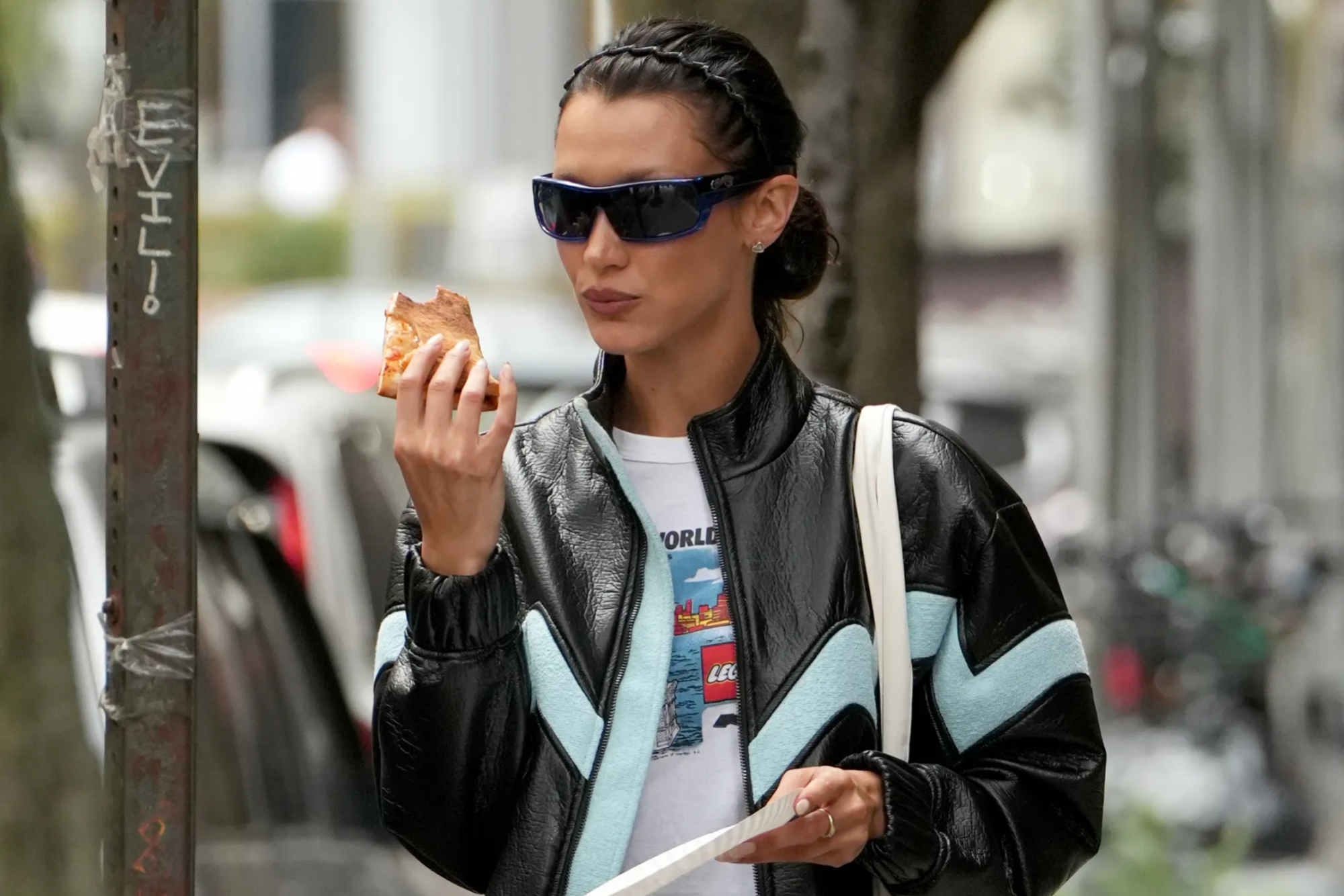
What's the deal with celebrities and junk food? What is real and what isn't in the pictures of Bella Hadid and Kim Kardashian eating a burger
If there is one person who is taken as a model by Gen Z, constantly observed, imitated, and admired, that is Bella Hadid. Whether it's a pair of Uggs worn with white shorts, vintage Prada bags, or viral moments on the runway, everything that the Palestinian-born model touches, turns into a media phenomenon. Even what she eats (or doesn't eat) becomes the subject of discussion, especially on TikTok.
The issue might seem shallow, even silly if it weren't for the fact that food, whether to be consumed to lose weight, to work out, to take care of oneself, or to look like someone, is one of the most popular topics on ByteDance's platform. At the same time, almost paradoxically, TikTok serves as an outlet for thousands of teens struggling with eating disorders - for whom the social media platform might turn into a double-edged sword, a safe place to open up but always be on the lookout. So what mechanisms can be triggered if one of the most successful supermodels, admired for her beauty and divine physique, posts videos in which she eats a slice of pizza or a hamburger, or where she shows how to make tasty sandwiches with cold cuts and various sauces? Many, judging by the discussion that has ensued on TT, a platform that knows Hadid and her family from her days on the reality show The Real Housewives of Beverly Hills, and especially knows her mom Yolanda, who is known for setting strict, if not toxic, rules about the food and body of her own daughters, Gigi included.
@usertooknap it’s literally a stunt yall
original sound - Jadi
To many, the doubt that arises is whether this food, in many cases junk food, exhibited by celebrities who are not limited to Bella Hadid (such as the classic photos at the Oscar after parties with fresh winners eating burgers and fries), is nothing more than a prop, an accessory to be displayed in favor of the camera to give a semblance of normality. The result is a short-circuit between that celebrity and the situation, anything but ordinary, and a meal common to millions of people. This description might suit the latest birthday party organized by Kim Kardashian who, forced to cancel her trip to Vegas, fell back on an In-and-Out in Los Angeles, still in the outfit made of shiny pants and crop tops. The fast food restaurant thus becomes a set in which to act, to enact a glamorized semblance of everyday life. But this is still the same person who only a few months ago candidly recounted that she had lost almost 16 pounds to fit into the Met Gala dress and the same family that was concerned about the sudden weight loss of her sister Khloé, for years ostracized because she was guilty of not adhering all the way to the aesthetic standards imposed by her own family.
The ambiguous relationship between celebrities and fast food is nothing new. Just think of the classic photographs of Victoria's Secret models before their shows, portrayed surrounded by pizzas and fries in a not-too-covert attempt to convey the message "Angels eat too (and junk food even!!)," when rumors of smoothies and diets close to absolute fasting still surround the brand's events. The practice would seem to be as follows: when the conversation - online or in the media - becomes too insistent on uncomfortable topics such as eating disorders or dangerous diets, the celebrity in question posts a video or photo in which he or she eats junk food or a piece of pizza (as if, moreover, a single "cheat meal" could affect such a well-trained body), silencing all accusations and suspicions.
But not only that. As dietitian Mallory Page explained on TikTok, seeing celebrities eat normal things makes them appear "familiar, relatable and attainable" - in short, it makes them seem closer and more connected to us. At the same time, however, this insinuates a doubt that is difficult to dispel: if we eat the same things, then why don't we look the same? Clearly, it's not a hamburger that makes the difference, but a lifestyle that provides access to certain services, treatments, and specialists that most people are denied. That is why we will never look like Bella Hadid.
@malloryjpage #stitch with @usertooknap rite aid? thrifty? it was literally like one of the best nights of my life #kardashians #bellahadid original sound - Mallory Page
It's in this dichotomy, in this precarious balance, that marketing and revenue opportunities come into play. As the New York Times wrote a few months ago: "Welcome to the era of the celebrity happy meal. Fast-food companies are tripping over themselves to align their products with supernova musicians and influencers in the hopes that their menu items will appeal to a younger audience. For consumers, it is a relatively cheap and easy way to connect with their favorite celebrities or influencers. [...] These celebrity partnerships are also helping brands gain access to where millions of digital natives spend tons of time: Instagram, TikTok and other social media platforms."
Between aspirational videos on how to become that girl, tutorials explaining how to get Bella Hadid abs, and videos in which celebrities devour a hamburger, the message is too fragmented and contradictory to the point of becoming dangerous. Especially for the younger generation, never more so than today in a toxic relationship with food and struggling with eating disorders.










































